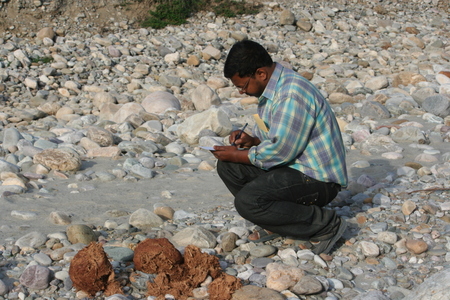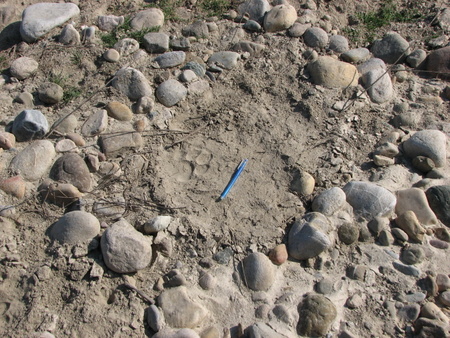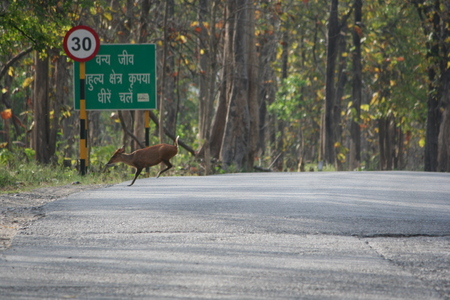WLT and WTI support the first phase of relocation in Sunderkhal
Haldwani, September 10, 2014: World Land Trust (WLT) and Wildlife Trust of India (WTI) are supporting the first phase of relocation, which concentrates on the voluntary relocation of around 50 families from the Panod section of Sunderkhal (Chilkiya-Kota) corridor, which lies closest to the area of animal movement and has the highest number of human- wildlife conflict cases.

Project Lead Sumanta Kundu documenting herd movement in Sunderkhal corridor.
Photo: Rudra Prassana Mahapatra/WTI
The Sunderkhal (Chilkiya-Kota) corridor provides connectivity between the Corbett Tiger Reserve (CTR) and Ramnagar Forest Division and is the most vital corridor for tiger, elephant and other wild animal movement between these two forests. Unfortunately, majority of this 3.75 km wide corridor has been occupied by the migratory population. These settlers have migrated from Almorah, Garwal and Nainital, and many of them work as labour in nearby hotels and resorts. The fact that these settlers are on the banks of Kosi River that serves as the most critical part of the corridor, makes the situation even more alarming.

A tiger pug mark in an elephant footprint documented in the Sunderkhal corridor. Photo: Sumanta Kundu/WTI
To deal with the rising problem of human-carnivore conflict in the Sunderkhal (Chilkiya-kota) corridor, whose preservation is vital for elephant and tiger conservation, Wildlife Trust of India (WTI) and World Land Trust (WLT) in collaboration with the Uttarakhand Forest Department have offered to relocate a part of the human settlement to a safer location with pakka houses and land ownership. Currently they dwell in mud houses with thatch roofs. The villagers have also agreed to the relocation.
“To conserve the wildlife especially elephants and tigers, as well as to ameliorate the suffering of people due to conflict with wildlife, rehabilitating the villagers to safer place is the only option. This will be a win win situation for both the villagers who are living in poor conditions and wildlife”, says Dr Sandeep Tiwari, Deputy Director and Regional Head, Uttarakhand and Uttar Pradesh.
Corbett Tiger Reserve has the highest tiger density and the population also serves as a gene source for the entire landscape. It also has a large elephant population.










